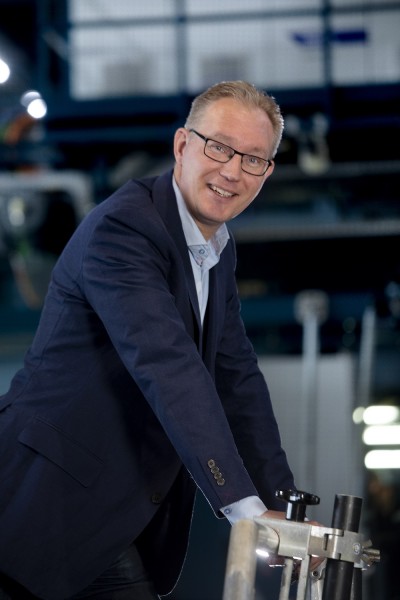 ‘ We face increased pressure for lower emissions, an acceleration in the energy transition and more hybrid solutions’
‘ We face increased pressure for lower emissions, an acceleration in the energy transition and more hybrid solutions’
MARIN’s Transport and Shipping department is extremely diverse. The team handles projects across the entire spectrum, from ultra large container vessels to LNG carriers and inland vessels. Our clients are mainly European and Asian design offices and shipyards, and they are often accompanied by the shipowner.
Patrick Hooijmans, Project Manager coordinating the Transport and Shipping market, explains: “As the ship is still in the design phase, operations are usually not discussed, although we see some clients that would like to derive mathematical models to allow them to perform operational studies or bridge simulations.” Additionally, sea trials are very important as contract speeds are strict and there can be high penalties applied when the contract speed is not met. Independent sea trials performed by MARIN’s Performance@Sea department are therefore
inevitable.
EEXI regulations
Recent developments at the IMO, which have led to EEXI regulations coming into force in 2023, will have a huge impact, Patrick stresses. Studies show that a significant part of the existing fleet will need to have modifications to their hull and/or propeller to meet the standards. “As a result, we are seeing a huge demand for new vessels and retrofits.” For those looking at retrofit options, there is growing interest in wind-assisted propulsion, he adds.
Carbon Intensity Index
“However, we see quite some challenges, especially in view of the upcoming Carbon Intensity Index (CII). Although the details of these regulations are not clear yet, one thing is certain – the CII, in combination with the EEXI rules and regulations, is likely to have an impact on a significant number of vessels. As EEXI is determined for a fixed condition, the CII will be based on fuel consumption in real operations. There will also be increased pressure for lower emissions in view of the climate goals, an acceleration in the energy transition and more hybrid solutions are expected in this sector.” The knowledge gained in our Zero Emission Lab (ZEL), which is under construction, will definitely help here, Patrick points out.
WiSP sequel
As mentioned, we see increasing interest in wind-assisted propulsion. For this reason, a sequel of the WiSP JIP has been launched and is still open for new participants. “It is crucial to collaborate together to establish clear rules and regulations and transparent performance predictions to enable us to convince owners of the potential of wind-assisted propulsion. It is not just a feature to lower EEDI or EEXI numbers; there is a real fuel consumption advantage to be gained. Close cooperation between suppliers, classification societies and shipowners is vital to achieve this.”

